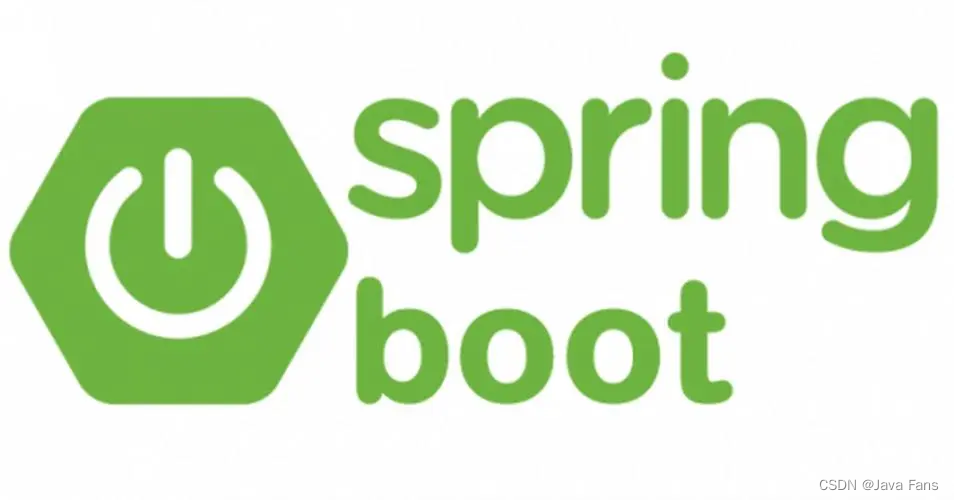SpringBoot 整合 JSP和MyBatis

✅作者简介:2022年博客新星 第八。热爱国学的Java后端开发者,修心和技术同步精进。
🍎个人主页:Java Fans的博客
🍊个人信条:不迁怒,不贰过。小知识,大智慧。
💞当前专栏:SpringBoot 框架从入门到精通
✨特色专栏:国学周更-心性养成之路
🥭本文内容:SpringBoot 整合 JSP 和 MyBatis
文章目录
- 💖 Spring Boot starter入门
- 💖 SpringBoot基本设置
- 6.1 SpringBoot设置端口号
- 6.2 SpringBoot设置项目名
- 6.3 SpringBoot配置文件的拆分
- 6.4 SpringBoot开启日志
- 6.5 SpringBoot实现热部署
- 6.6 SpringBoot开启分页查询
- 💖 springBoot对象管理
- 💖 springBoot整合JSP
- 💖 SpringBoot整合MyBatis

💖 Spring Boot starter入门
传统的 Spring 项目想要运行,不仅需要导入各种依赖,还要对各种 XML 配置文件进行配置,十分繁琐,但 Spring Boot 项目在创建完成后,即使不编写任何代码,不进行任何配置也能够直接运行,这都要归功于 Spring Boot 的 starter 机制
Spring Boot 将日常企业应用研发中的各种场景都抽取出来,做成一个个的 starter(启动器),starter 中整合了该场景下各种可能用到的依赖,用户只需要在 Maven 中引入 starter 依赖,SpringBoot 就能自动扫描到要加载的信息并启动相应的默认配置。starter 提供了大量的自动配置,让用户摆脱了处理各种依赖和配置的困扰。所有这些 starter 都遵循着约定成俗的默认配置,并允许用户调整这些配置,即遵循“约定大于配置”的原则
并不是所有的 starter 都是由 Spring Boot 官方提供的,也有部分 starter 是第三方技术厂商提供的,例如 druid-spring-boot-starter 和 mybatis-spring-boot-starter 等等。当然也存在个别第三方技术,Spring Boot 官方没提供 starter,第三方技术厂商也没有提供 starter
以 spring-boot-starter-web 为例,它能够为提供 Web 开发场景所需要的几乎所有依赖,因此在使用 Spring Boot 开发 Web 项目时,只需要引入该 Starter 即可,而不需要额外导入 Web 服务器和其他的 Web 依赖
<!--SpringBoot父项目依赖管理-->
<parent>
<groupId>org.springframework.boot</groupId>
<artifactId>spring-boot-starter-parent</artifactId>
<version>2.5.13</version>
<relativePath/>
</parent>
<dependencies>
<!--导入 spring-boot-starter-web-->
<dependency>
<groupId>org.springframework.boot</groupId>
<artifactId>spring-boot-starter-web</artifactId>
</dependency>
...
</dependencies>
</project>
您可能会发现一个问题,即在以上 pom.xml 的配置中,引入依赖 spring-boot-starter-web 时,并没有指明其版本(version),但在依赖树中,我们却看到所有的依赖都具有版本信息,那么这些版本信息是在哪里控制的呢?
其实,这些版本信息是由 spring-boot-starter-parent(版本仲裁中心) 统一控制的。
spring-boot-starter-parent
spring-boot-starter-parent 是所有 Spring Boot 项目的父级依赖,它被称为 Spring Boot 的版本仲裁中心,可以对项目内的部分常用依赖进行统一管理。
<!--SpringBoot父项目依赖管理-->
<parent>
<groupId>org.springframework.boot</groupId>
<artifactId>spring-boot-starter-parent</artifactId>
<version>2.4.5</version>
</parent>
Spring Boot 项目可以通过继承 spring-boot-starter-parent 来获得一些合理的默认配置,它主要提供了以下特性:
- 默认 JDK 版本(Java 8)
- 默认字符集(UTF-8)
- 依赖管理功能
- 资源过滤
- 默认插件配置
- 识别 application.properties 和 application.yml 类型的配置文件
💖 SpringBoot基本设置
6.1 SpringBoot设置端口号
server:
port: 8989 #配置端口
6.2 SpringBoot设置项目名
server:
servlet:
context-path: /springboot #配置项目的虚拟路径(根路径) 项目名使用/开头
6.3 SpringBoot配置文件的拆分
spring:
profiles:
active: dev #开发环境

6.4 SpringBoot开启日志
# 显示sql
logging:
level:
cn.kgc.springboot.mapper: debug #开启日志
6.5 SpringBoot实现热部署
在web项目的开放过程中,通常我们每次修改完代码都需要重新启动项目,实现重新部署。但是随着项目越来越庞大,每次启动都是一个费时的事情。所以,热部署是一个非常构建的技术,有了热部署,可以极大提高我们的开发效率
spring-boot-devtools实现热部署
1.引入依赖
<dependency>
<groupId>org.springframework.boot</groupId>
<artifactId>spring-boot-devtools</artifactId>
</dependency>
2.配置maven插件
<build>
<plugins>
<plugin>
<groupId>org.springframework.boot</groupId>
<artifactId>spring-boot-maven-plugin</artifactId>
<configuration>
<fork>true</fork> <!-- 如果devtools不生效 请设置该属性 -->
</configuration>
</plugin>
</plugins>
</build>
3.配置application.yml文件
devtools:
restart:
enabled: true #开启热部署
4.修改idea设置
File-Settings-Compiler 勾选 Build Project automatically
5.设置Registry
ctrl + shift + alt + / ,选择Registry,勾选Compiler autoMake allow when app running
6.6 SpringBoot开启分页查询
1.引入依赖:
<dependency>
<groupId>com.github.pagehelper</groupId>
<artifactId>pagehelper-spring-boot-starter</artifactId>
<version>1.2.12</version>
</dependency>
----------------------------------------------
<dependency>
<groupId>com.github.pagehelper</groupId>
<artifactId>pagehelper-spring-boot-starter</artifactId>
<version>1.2.10</version>
</dependency>
2.配置application.yml文件(可以不配置使用默认)
# pageHelper分页配置
pagehelper:
helper-dialect: mysql #数据库类型
reasonable: true #分页合理化 page<1 查询第一页 page >pageNumber 查询最后一页
support-methods-arguments: true # 支持mapper接口传递参数开启分页
params: count=countSql #用于从对象中根据属性名取值
3.编写控制器,业务层,持久化层进行测试
@Override
public PageInfo<User> getPage(int pageNum, int pageSize) {
PageHelper.startPage(pageNum, pageSize);
List<User> userList = userMapper.selectList();
PageInfo<User> pageInfo = new PageInfo<>(userList);
return pageInfo;
}
💖 springBoot对象管理
-
管理对象
spring中管理对象的方式:
1.使用xml配置文件,在文件中使用bean标签设置对象的管理
<bean id="" class="xxx.xxx.xxx"></bean>2.使用注解 @Component @Controller @Service @Repository
springboot管理对象的方式:1.使用配置方式创建对象
springboot支持使用 @Configuration 注解添加在配置类上,该类作为一个配置类,相当于spring的配置文件,该注解只能使用在类上。在配置类中方法上使用 @Bean 注解,相当于spring配置文件中的bean标签@Configuration public class MyConfiguration{ @Bean public User getUser(){ return new User(); } @Bean public Student getStudent(){ return new Student(); } }2.使用原始的 spring 注解 @Component @Controller @Service @Repository
-
属性注入
spring 原始的注入方式
1.set方式
2.constructor
3.自动注入
name: tom age: 30 price: 23.5 sex: true birth: 2021/11/28 12:12:12 array: 12,13,15,17 list: 李四,lisi,tom map: "{'aa':30,'bb':'lisi'}" # 注入map使用json格式 取值的个数#{${map}}对象的注入
object: name: lisi age: 20 birth: 2021/11/24@Controller @RequestMapping("/inject2") @ConfigurationProperties("object") public class InjectController2 { private String name; private Integer age; private Date birth; public void setName(String name) { this.name = name; } public void setAge(Integer age) { this.age = age; } public void setBirth(Date birth) { this.birth = birth; } @RequestMapping("/inject") @ResponseBody public String inject(){ System.out.println(name); System.out.println(age); System.out.println(birth); return "ok"; } }注意:添加一下依赖,可以再写yaml文件时提示,消除红色的警告提示。
<dependency> <groupId>org.springframework.boot</groupId> <artifactId>spring-boot-configuration-processor</artifactId> <optional>true</optional> </dependency>
💖 springBoot整合JSP
引入依赖
<!-- 标准标签库-->
<dependency>
<groupId>jstl</groupId>
<artifactId>jstl</artifactId>
<version>1.2</version>
</dependency>
<!-- 让springboot内置的tomcat具有解析jsp的能力-->
<dependency>
<groupId>org.apache.tomcat.embed</groupId>
<artifactId>tomcat-embed-jasper</artifactId>
</dependency>
配置视图解析器
spring:
mvc:
view:
prefix: /
suffix: .jsp
设置不重启项目 刷新jsp页面
server:
servlet:
jsp:
init-parameters:
development: true # 修改jsp页面无需重新启动项目
集成后无法访问jsp页面解决方案
1.添加插件
<build>
<resources>
<!--注册webapp目录为资源目录-->
<resource>
<directory>src/main/webapp</directory>
<targetPath>META-INF/resources</targetPath>
<includes>
<include>**/*.*</include>
</includes>
</resource>
</resources>
<plugins>
<plugin>
<groupId>org.springframework.boot</groupId>
<artifactId>spring-boot-maven-plugin</artifactId>
</plugin>
</plugins>
</build>
2.设置工作目录

3.插件启动

💖 SpringBoot整合MyBatis
引入依赖
<dependency>
<groupId>mysql</groupId>
<artifactId>mysql-connector-java</artifactId>
<version>5.1.47</version>
</dependency>
<dependency>
<groupId>org.mybatis.spring.boot</groupId>
<artifactId>mybatis-spring-boot-starter</artifactId>
<version>2.1.3</version>
</dependency>
<dependency>
<groupId>com.alibaba</groupId>
<artifactId>druid</artifactId>
<version>1.1.12</version>
</dependency>
编写配置文件
spring:
datasource:
type: com.alibaba.druid.pool.DruidDataSource
driver-class-name: com.mysql.jdbc.Driver
username: root
password: root
url: jdbc:mysql://localhost:3306/mybatis?serverTimezone=UTC&characterEncoding=utf-8
mybatis配置
mybatis:
mapper-locations: classpath:mapper/*.xml #设置mapper文件的位置
type-aliases-package: cn.kgc.springboot.entity # 起别名
configuration:
map-underscore-to-camel-case: true #开启驼峰命名
设置dao接口的扫描
1.在入口类上使用注解,完成扫描
@SpringBootApplication
@MapperScan("cn.kgc.springboot.dao") //扫描dao接口所在的包 同时生成代理对象 注入spring容器
public class Springday02Application {
public static void main(String[] args) {
SpringApplication.run(Springday02Application.class, args);
}
}
码文不易,本篇文章就介绍到这里,如果想要学习更多Java系列知识,点击关注博主,博主带你零基础学习Java知识。与此同时,对于日常生活有困扰的朋友,欢迎阅读我的第四栏目:《国学周更—心性养成之路》,学习技术的同时,我们也注重了心性的养成。

